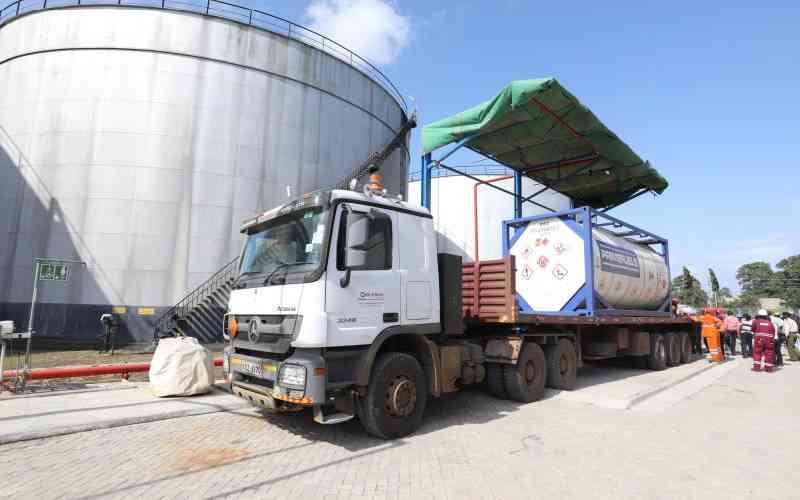
The Communications Authority of Kenya (CA) has set up a regulatory sandbox to assist ICT start-ups test their new ideas in a controlled environment before rolling them out to the market.
CA explained it is establishing an environment where innovators have a free hand to test their products. The regulator would also be able to see what such an innovation can do at its best but also the consequences of failure of the product in a controlled environment.
CA noted that the regulatory sandbox would offer startups space to bring into the market technologies that could dominate ICT for the next few decades. In fostering innovation, the ICT sector regulator said it is trying to go ahead of what has been witnessed in the past.
Over the last century, the ICT landscape has undergone transformative shifts, marked by the rise and fall of monopolies and the emergence of new players. Initially, landline monopolies dominated the scene globally, dictating communication infrastructures and services. However, the last few decades have witnessed the rise of both landline monopolies and mobile oligopolies, ushering in a new era of competition and innovation.
This has however expanded with increased players in the ICT arena offering consumers a diverse range of services beyond traditional voice communication. Text services and data became integral components of this evolving landscape, shaping the way people connect and interact.
Looking ahead, the trajectory of ICT suggests a future characterised by further diversity and specialisation.
Cloud computing
This transition towards data-centric communication is propelled by advancements in technology, including the growing adoption of 5G, the proliferation of Internet of Things (IoT) devices, the rise of blockchain technology, the integration of Artificial Intelligence (AI), and the expansion of cloud computing capabilities.
- Five signs you need to take a break from the Internet
- KMPDU, nurses condemn assault of colleague at Busia hospital in viral video
- Union withdraws nurses from Port Victoria hospital in protest
- Medics want state to enhance security in hospitals
Keep Reading
CA noted these developments have necessitated the need for a regulatory sandbox. The ICT industry regulator noted that as technologies and services emerge, traditional regulatory frameworks may struggle to keep pace, hindering innovation and stifling market competition.
A regulatory sandbox, CA notes, provides a controlled environment where innovators can test ideas and business models, under relaxed regulatory rules - albeit under the eye of the regulator while fostering experimentation and creativity.
“To facilitate these new developments, we need a sandbox framework. We have to change how we have been doing this. We need to provide an environment where people can innovate and bring products in a good way,” said CA in a brief on the regulatory sandbox.
The innovators admitted to the sandbox will also get certain exemptions and incentives. CA said the sandbox will serve a dual purpose of facilitating regulation and ensuring regulatory compliance. Beyond experimentation, a sandbox generally serves as an incubator as well as for collaboration and knowledge exchange.
They enable regulators to gain insights into the nuances of new technologies, enabling them to make informed decisions about regulatory frameworks.
The regulatory sandbox model alleviates the initial burdensome load of compliance, offering a smoother entry point into the market for budding entrepreneurs. By mitigating risks associated with untested innovations, it instils confidence among investors and consumers.
“It will give young people the opportunity to bring ICT-related ideas and test them in the real world while the regulator will relax the rules to enable them to test it in a safe environment with defined boundaries and safeguards,” said CA.
“We give an assurance that the consequences of failure can be contained. We are also seeking to foster research and innovation, facilitate market access, ensure that we are competitive and consumer protection.” Others could come in to support the innovators such as universities, research institutions, and consumer groups.
Some of the products that CA is looking at testing in the sandbox include e-commerce delivery models, cyber security tools, e-learning platforms, drone technologies and e-health solutions.
“We want to encourage innovation by providing an environment where innovators can test new ideas and refine them until they are ready for market rollout. There are people looking for opportunities and if they can find super good ideas,” it noted. “We are also looking to improve the regulatory environment. When we get ideas, we see where the market is headed and change to adapt these new ideas. We also want to foster collaboration, and improve consumer protection.”
 The Standard Group Plc is a multi-media organization with investments in media platforms spanning newspaper print
operations, television, radio broadcasting, digital and online services. The Standard Group is recognized as a
leading multi-media house in Kenya with a key influence in matters of national and international interest.
The Standard Group Plc is a multi-media organization with investments in media platforms spanning newspaper print
operations, television, radio broadcasting, digital and online services. The Standard Group is recognized as a
leading multi-media house in Kenya with a key influence in matters of national and international interest.











